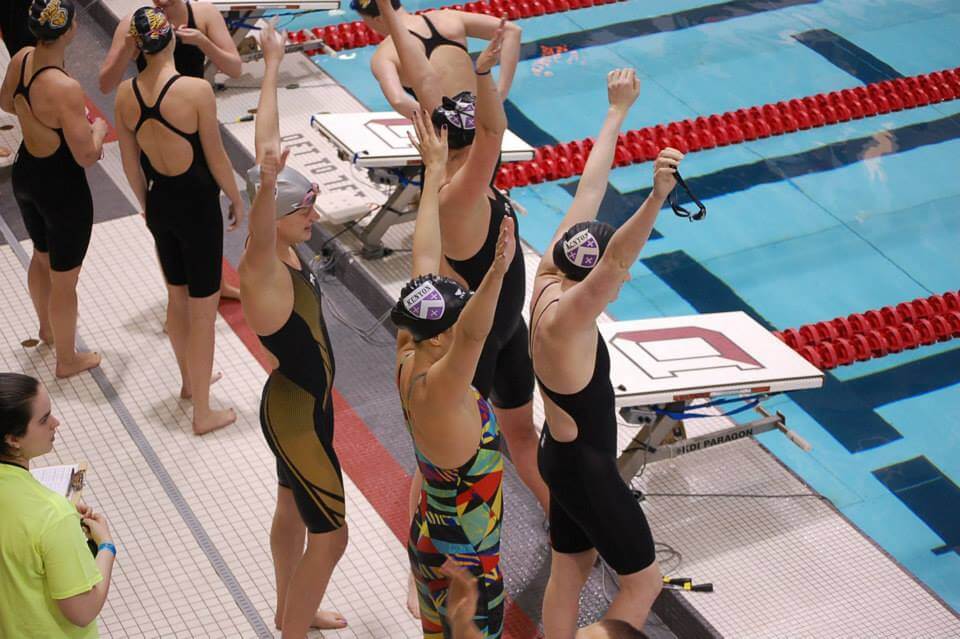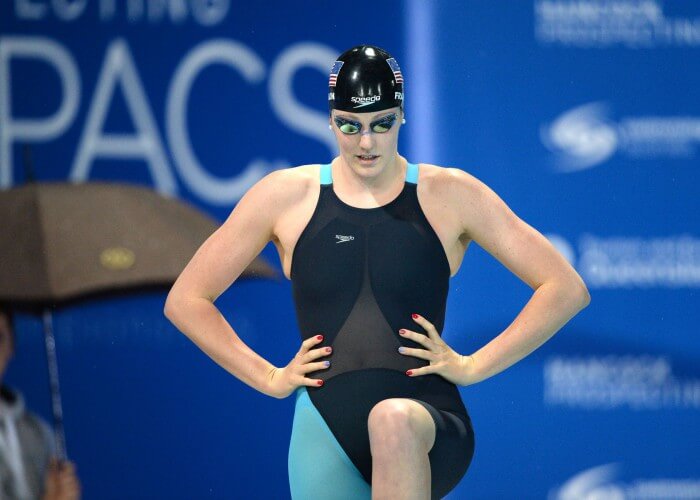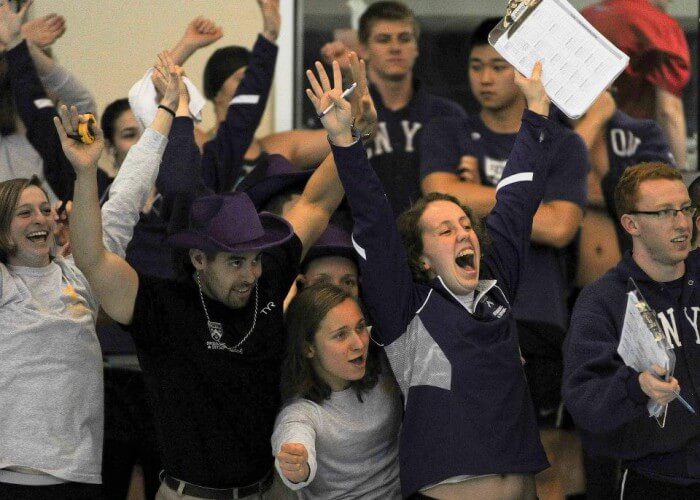Power Posing: Why it Works

By Sarah Lloyd, Swimming World College Intern
Food For Thought
When the Kenyon College Lords and Ladies swimming and diving team walked into the large theater in the athletic center for the first official team meeting in early September, they were greeted by head coach Jess Book, standing in front of an enormous screen displaying a Youtube video of a Ted Talk.
The 20 minute video, by social psychologist Dr. Amy Cuddy was titled Your Body Language Shapes Who You Are and discussed the ways in which a person’s physical size and position affects their psychology, especially the action of power posing–or making one’s body larger in order to change one’s mindset and confidence level.
Book’s intention in showing the team this talk, which he found one day during his lunch break, was to provide some food for thought in the beginning of the season. But the idea quickly became an integral part of the team’s culture for the season.
The Science Behind Power Posing
Body language pervades every aspect of our lives as humans, even if we don’t consciously see it. The way in which we carry ourselves is primal and inextricably linked to our emotions. Of key importance is the universal fact that all humans will tend to make themselves appear larger–arms outstretched, chin high, chest pushed outwards, legs further than shoulder-width apart–when they feel victorious, confident, and proud.
Conversely, when people feel shame, intimidation, or embarrassment, they will tend to make themselves appear smaller by pulling their arms in, curling up, and pulling their chin into their chest. These actions are physical manifestations of hormonal changes in a person’s brain and among social psychologists, it’s common knowledge that the way we feel have an affect on the way we express ourselves.
The way others perceive us is based on the way we present ourselves, which is based on how we feel. Cuddy’s researched focused on this question–can the way we present ourselves affect the way we, ourselves, feel and, in turn, the way we perform?
What Cuddy found is that when a person implements what she terms a power pose for two minutes–making oneself look larger–there is about a 20 percent increase in testosterone, or dominance hormone, levels from their baseline levels and a 25 percent decrease in their cortisol, or stress hormone, levels.
According to Dr. Jennifer Carter, the Director of Sports Psychology at Ohio State University and a former collegiate swimmer, the combination of increased testosterone and decreased cortisol levels is the perfect recipe for a mindset in which we are best equipped to deal with anxiety.
“When we’re anxious or stressed, the best way to cope is to face the anxiety head on…Unfortunately, our first urge to deal with anxiety is to avoid it, thereby increasing the anxiety in the long run,” she comments. She agrees that Cuddy’s research on power posing provides an easy and effective method to reducing pre-race stress and anxiety. “Changing your outside can change your inside,” she explains.
With so much research supporting such a simple change in a pre-race routine, this still may seem too good to be true.
Can changing the way you stand behind the blocks really change the outcome of the race? While many factors, especially effective and diligent training, certainly play a role in any swimmer’s performance, it seems that a quick confidence boost from a power pose can have a lasting impact.
Swimming With Our Brains
Power posing quickly became one of the favorite methods of support, encouragement, and pre-race preparation for the Kenyon College Lords and Ladies during the 2014-2015 season. Swimmers behind the blocks would lock eyes with their teammates on the side of the pool and everyone, including the coaches on occasion, would throw their hands in the air and stand in an “x” shape.
You couldn’t help but giggle at the sight of it. We all looked pretty silly, but I think it worked for us. We connected as a team in a way that we hadn’t the season before. Our energy levels skyrocketed, individuals and relays had mind-blowingly fast swims, and we had a blast on the pool deck.
“Power posing reinforces the idea that we want to be powerful, strong, and confident,” says Book. “While the whole team did not embrace the idea, many did. And those that drew the most benefit from it were those who typically felt the pressure from their own thoughts. Power posing not only gave them a physiological boost, but provided a tangible connection to the rest of the team–something outside of themselves.”
While power posing provides the individual with immediate hormonal changes that can increase the performance, it can also create a positive team environment.
The Takeaway
Cuddy challenges those in the audience during her talk to change their posture in order to change their lives.
“Tiny tweaks can lead to big changes,” she concludes. So next time you race, take an exam, go in for a job interview, or find yourself in another stressful situation, take two minutes to yourself to power pose. It could drastically change the outcome for the better.






Katie-Louise Robshaw
Zoe Mattingly
Power Posing: Why it Works